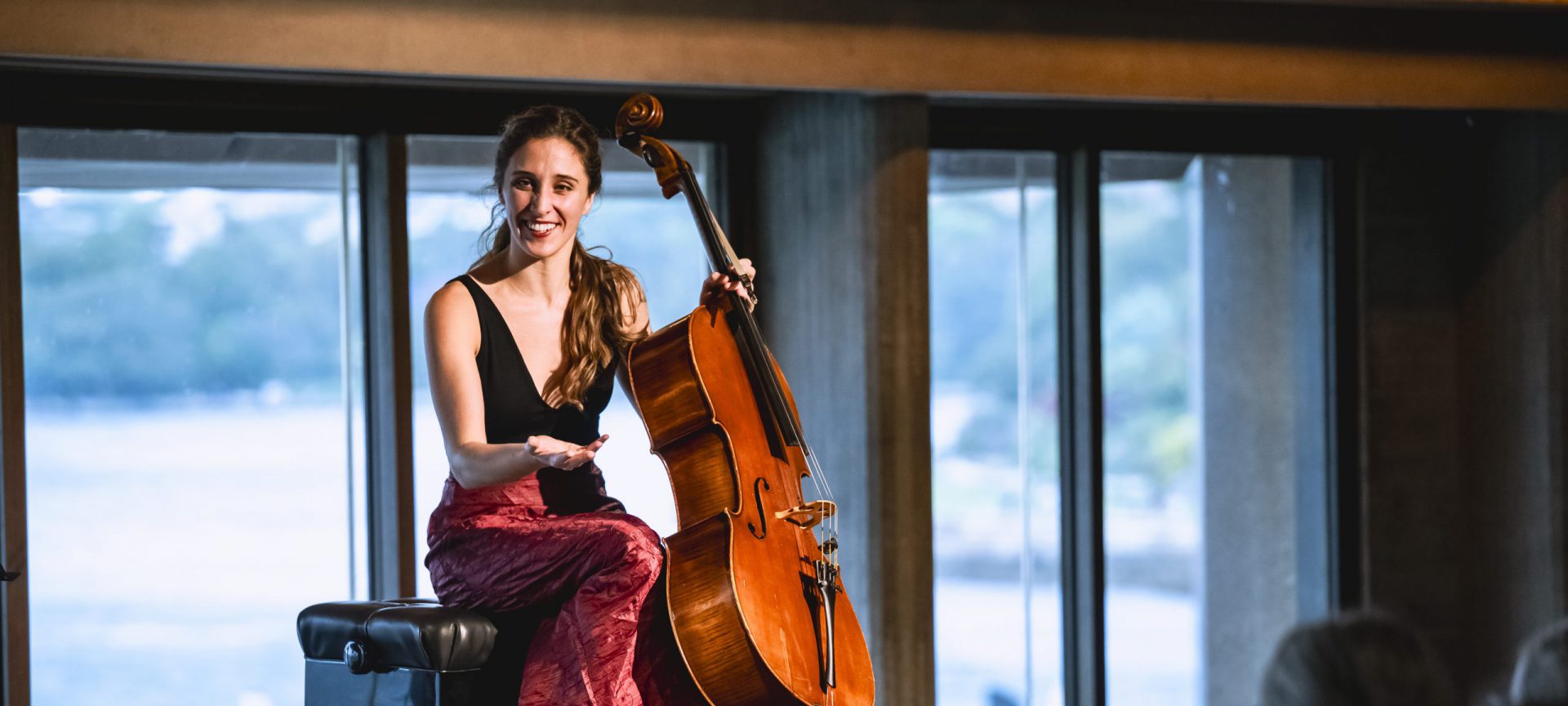Light, water and music meet in this celebration of the cello.
Utzon Music 2025 is a series of bite-sized Sunday afternoon concerts in the Sydney Opera House’s Utzon Room. Genevieve Lacey, well known to listeners of ABC Classic, curates this year’s series. She draws on her deep familiarity with classical music performers across the world. That familiarity drew her to the young American cellist, Annie Jacobs-Perkins.
Her program brought the old in dialogue with the new. That worked so well that parts of the old began to sound refreshingly modern, sometimes strange and often inventive.
The works of Joseph dall’Abaco featured prominently. I found myself wanting to know more about this Italian cellist, born in the Spanish Netherlands, who composed in the courts of Cologne and Bonn and later the Republic of Venice, and was later made baron in Bavaria.
It is hard to get more cosmopolitan. But his is not a name favoured by posterity. That is just as well. His style is decidedly backward-looking, smacking more of the Baroque than of the Classical soundworld into which he was born. His Caprice No 9 in C major was episodic and saturnine, much like the whimsical fantasia style of yesteryear. His Caprice No 11 in F major was replete with difficult arpeggios and scales and his Caprice No 1 in C minor was almost chaconne-like, based on a simple falling fourth and performed by Jacobs-Perkins with a clear robustness in the bass.
Jacobs-Perkins performed all this, and more, without a score. She was clearly immersed in all this on a visceral level. The visceral was brought out nicely by the very theme in Les Voix Humaines by Marin Marais – that master of the viola da gamba. The violoncello forms no part of the viol family, which has the distinctive family trait of sloped shoulders. But none of the viol’s scratchy earthiness was lost in Jacobs-Perkin’s performance. The entire performance featured sonorous sustained chords and crisp trills. The glistening voice-like vibrato brought out that hallmark of French viol music – the plaintes, or human sigh. It was all rounded off with a scratchy sotto voce ending.
The modern was three-fold. First was Esa-Pekka Salonen’s Arabesques for Olly. It was written for a cellist. It wavers between rambling chaos and contemplation, unified only by a sustained trill in the background. The last note dissipates into thin ether.
Second was Andrew Norman’s Sabina, which evokes a morning mass in Rome’s Basilica di Santa Sabina all’Aventino. It begins sul ponticello to give a delicious glassy effect. The buildup is a series of warm sustained arpeggios, which gives the impression of a sunrise. That is until it all returns to the bridge again, which a soft rendition of what appears to be a Gregorian chant.
Third was Pamela Madsen’s Why Women Weep which was overlaid with recordings of Anaïs Nin’s voice. The cello accompaniment is subtly programmatic. It generally evokes a feeling of nostalgia. When Nin speaks of “waves of sound” we have rapid arpeggios that wash over the audience.
It would not be a cello concert without one of Bach’s cello suites. Jacobs-Perkins chose the happiest of them all, No 3 in C major. As one would expect, the Sarabande was the most expressive of them all. The Bouree II took a turn to the minor, which gave a delicious chiaroscuro effect. The Gigue had some rough and ready passages redolent of a rural dance, which Jacobs-Perkins accentuated to great effect.
